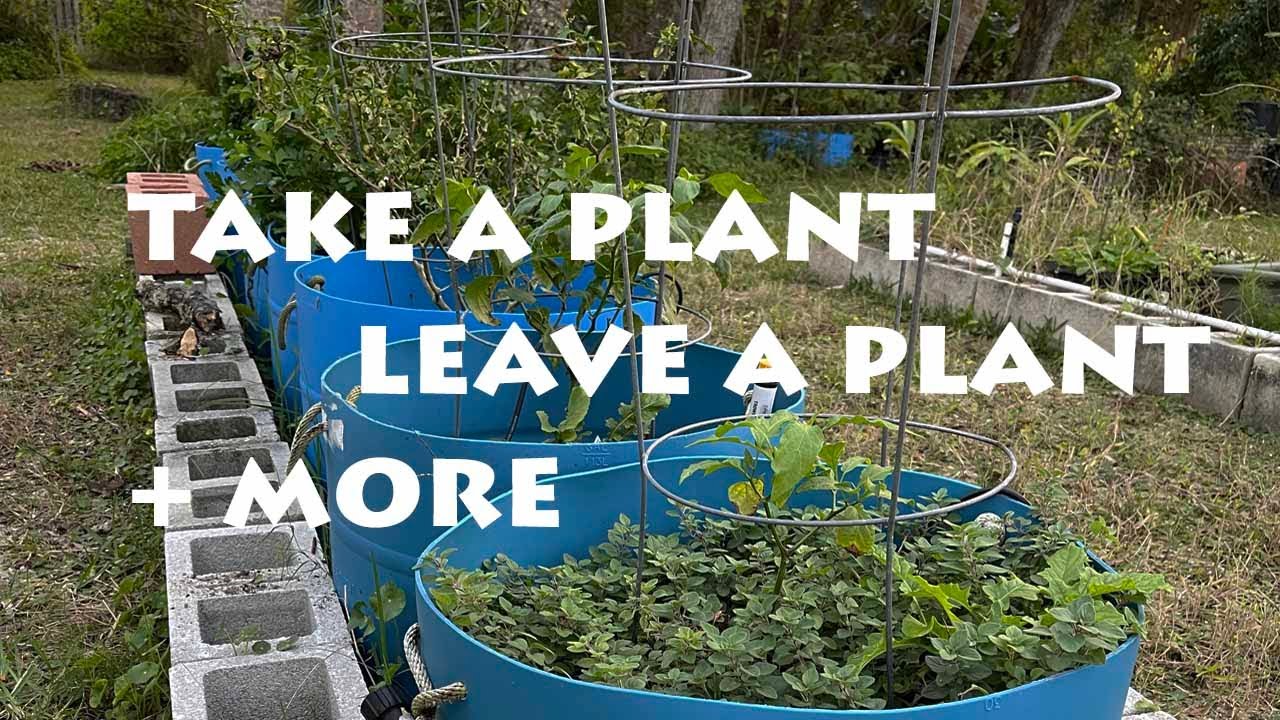During these difficult times, bringing your community together is more important than ever. If you love all things plants, reconnect with others and host a free neighborhood plant exchange swap — sharing is caring!
Plant swaps are a rewarding method of promoting inclusivity within your neighborhood and allow you to share the love of plants with other green thumbs. A neighborhood plant swap can be anything from a small gathering in your backyard to leaving some flowers, seeds, or plants by your neighbor’s door.
Read more to explore plant swap best practices and ideas to host the perfect neighborhood plant swap of your own!
Take a plant, leave a plant. This simple concept is the foundation of a growing community gardening movement connecting green thumbs across neighborhoods By creating free “plant exchanges,” gardeners can share their love of plants while building connections. I’ve seen firsthand how these informal exchanges can blossom into beautiful communities of sharing.
What is a Take a Plant, Leave a Plant Garden?
A take a plant, leave a plant garden is usually a small, local garden or stand set up to allow people to exchange plants for free The idea is that if you take a plant you like, you leave one in its place for someone else to enjoy There’s no formal swap or trade required.
These gardens can be found in neighborhoods, community parks or gardens. Often they are unmanned, operating on an honor system and community goodwill. A gardener may set up a backyard stand or small public garden with a sign inviting people to take and leave plants. Shelves, racks or tables display potted plants, marked cuttings, seeds, garden tools, and other items free for the taking.
While simple in concept, these exchanges help strengthen communities in profound ways:
-
They allow gardeners to easily share knowledge, plants, seeds, and resources.
-
They promote sustainability and reduce waste by finding new homes for extra plants.
-
They connect neighbors and foster friendships around a shared love of plants and gardening.
The Benefits of Take a Plant, Leave a Plant Gardens
Plant Sharing Builds Community
Take a plant, leave a plant gardens thrive on mutual giving. They create a space to meet fellow gardeners, talk plants, and build real human connections. Developing relationships with neighbors through plant swaps can make a neighborhood feel more like a community.
I’ve been amazed to see the friendships grow organically in plant exchange groups I’m part of online. We swap tips on gardening and preservation, share recipes for our bounty, and exchange plants in spring and fall. The vibrant garden photos and proud harvest shots keep us going through winter.
Promotes Sustainability
Exchanging plants reduces waste by finding new homes for extras. Gardeners often end up with surplus seedlings and divisions, especially prolific self-seeding plants like herbs and tomato volunteers. Take a plant, leave a plant gardens put these extras to use instead of letting them wither.
Passing along divided perennials, rooted cuttings, and volunteers keeps plants out of landfills. And planting these “rescues” avoids the environmental costs of commercial nursery production and transport. It’s the ultimate in sustainable, local food production.
Easily Expand Your Plant Collection
Participating in exchanges is a fun, free way for gardeners to expand their beds and containers with new plants. Avid gardeners know the temptation to try just one more interesting plant. By swapping with others, you can add new specimens without spending a fortune.
Trading cuttings and divisions of treasured plants lets others enjoy special heirlooms you’ve nurtured. When a friend shared a cutting from her grandmother’s peony bush, it felt like a priceless gift. Take a plant, leave a plant gardens abound with living history passed from gardener to gardener.
Creating a Take a Plant, Leave a Plant Garden
Starting your own plant exchange stand takes just a few simple steps:
Choose a Spot
Pick a visible location to situate your garden. The front yard or edge of the driveway works well so passersby notice it. Make sure it gets sufficient sun for growing plants. If possible, provide access to water for giving plants a drink.
Set Up Shelves or Tables
The vertical space of shelves and racks displays plants nicely. Scraps of wood, an old bookcase, or a plant stand quickly make a serviceable garden. Make sure it’s easy for people to access. A few folding tables also work well to hold potted plants.
Spread the Word
Let your neighbors know about the garden by posting signs, handing out flyers, or posting on community pages. I’ve found Facebook groups and Nextdoor helpful to publicize plant exchanges. Be sure to mention the take a plant, leave a plant concept.
Stock the Garden
Harvest extras from your own garden or ask neighbors for donations to get started. Pot up plant divisions, root cuttings, and volunteers. Label plants if possible to aid identification. Provide trowels, markers, trays, and other useful supplies.
Consider Expansion
Once up and running, your exchange can grow. Visitors often contribute their own plants, cuttings, pots, and tools. You may need more shelves and tables. Expanded hours make swapping more convenient for those with busy schedules.
While simple in execution, take a plant, leave a plant gardens have profound power to unite community. So don’t just tend your own garden – build a space to share your passion for plants far and wide.

Plant Swap Ideas
Now that you know the basics of organizing a plant swap, you can have fun with trading plants with those in your neighborhood. Here are some of our favorite ideas of how you can get creative:
Tips for a Successful Plant Swap
To host a successful plant swap in your neighborhood, there are a few things you need to consider as you plan.
How to Propagate Plants: 4 Methods to Master
0
